What Tarantulas Eat
Tarantulas, fascinating arachnids, have unique dietary needs that are crucial for their survival and well-being. Understanding their feeding habits is essential for any tarantula owner or enthusiast. These creatures are primarily insectivores, meaning their diet mainly consists of insects. However, the specific types of insects they consume and the frequency of feeding can vary depending on their age, size, and the environment they live in. It’s important to replicate their natural diet as closely as possible in a captive setting to ensure they thrive and exhibit their natural behaviors. A well-nourished tarantula is a healthy tarantula, and this starts with knowing exactly what they eat.
Understanding Tarantula Diet
Tarantulas have evolved to be opportunistic predators, which means they’ll eat a wide variety of prey items. In the wild, their diet can include anything from crickets and grasshoppers to small lizards and even other tarantulas. In captivity, the most common food source is live insects, such as crickets, mealworms, and dubia roaches. The size of the prey should always be appropriate for the tarantula’s size; a general rule is to offer insects that are no larger than the tarantula’s body length. Additionally, it’s crucial to provide a variety of food to ensure they receive a balanced diet. Some keepers also supplement their tarantulas’ diet with pre-killed insects to avoid any potential hazards associated with live feeding, such as bites or injuries from the prey. They will often consume prey they have captured and will wait until they’re hungry to eat.
The Importance of Proper Nutrition
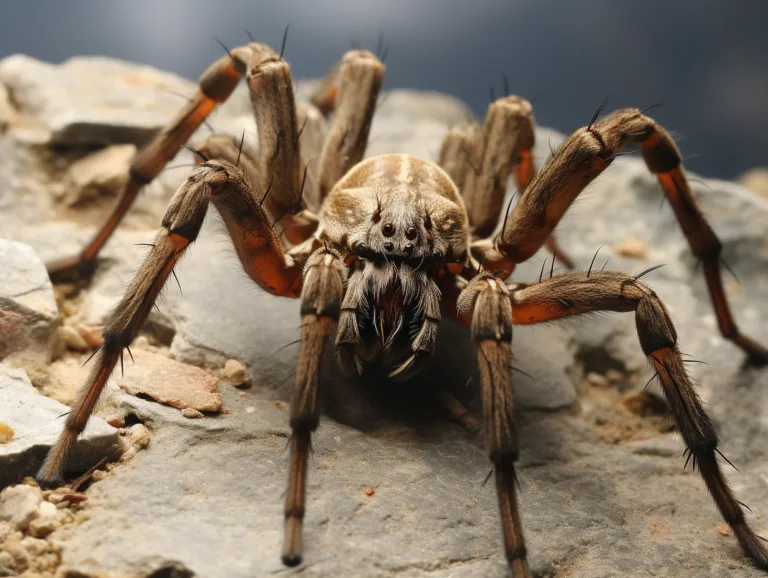
Proper nutrition is not just about survival; it’s vital for the overall health and longevity of a tarantula. A well-balanced diet ensures that the tarantula receives all the necessary nutrients, vitamins, and minerals required for growth, molting, and reproduction. A malnourished tarantula may have difficulty molting, experience stunted growth, or become more susceptible to diseases. The quality of the food is also important. It’s recommended to feed insects that have been gut-loaded, meaning they have been fed nutritious foods before being offered to the tarantula. This practice helps ensure the tarantula receives the maximum nutritional value from its meals. A healthy, well-fed tarantula is more likely to exhibit its natural behaviors, such as hunting, web-building, and mating. Feeding a quality diet is key to a tarantula’s well-being.
Top 5 Amazing Facts About Tarantula’s Eating Habits
Fact 1 Tarantulas Can Go Months Without Food
One of the most astonishing facts about tarantulas is their ability to survive for extended periods without food. Adult tarantulas, especially females, can go for several months, even up to a year, without eating. This remarkable adaptation is due to their slow metabolism and their ability to conserve energy effectively. They can break down their own body tissues to survive when food is scarce. This ability is a significant advantage in the wild, where food availability can fluctuate dramatically. However, just because they can survive without food doesn’t mean they should always be deprived of it; regular feeding is still crucial for their health in captivity. It’s an incredible survival mechanism that showcases the resilience of these creatures.
Why Tarantulas Can Fast for Long Periods
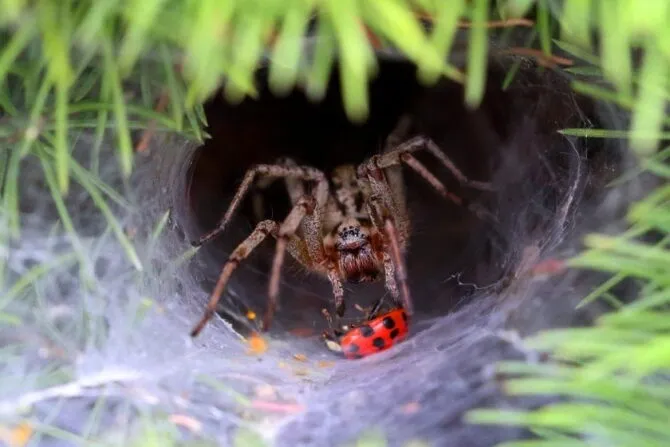
Tarantulas have several physiological and behavioral adaptations that allow them to fast for extended periods. Their slow metabolism is a key factor; they don’t burn energy as quickly as other animals. Their large abdomens also serve as a storage area for nutrients, which they can draw upon during times of starvation. Furthermore, tarantulas often become less active when food is scarce, conserving their energy. They also possess an efficient water conservation system, which helps them stay hydrated even without food. This combination of factors makes them remarkably resilient in environments where food is not consistently available, which is why they can survive for so long without eating.
Fact 2 Young Tarantulas Eat More Frequently
In contrast to adults, young tarantulas, or spiderlings, require more frequent feeding. This is because they are in a rapid growth phase and need a consistent supply of nutrients to molt and develop properly. Spiderlings may need to be fed several times a week, depending on their size and the type of food offered. Their higher metabolism and smaller body size mean they burn through energy faster. The amount of food they consume also increases as they grow. It’s essential to adjust the feeding schedule as they mature, gradually reducing the frequency as they approach adulthood. The correct feeding schedule for young tarantulas is critical for their healthy development. Providing a steady food supply is vital for their growth.
Fact 3 Adult Tarantulas Require Less Feeding
Adult tarantulas, having reached their full size, do not need to eat as often as juveniles. Their growth slows down significantly, and their energy requirements decrease. Many adult tarantulas can thrive on a feeding schedule of once a week or even once a month, depending on the species and individual. Overfeeding an adult tarantula can lead to health problems, such as obesity and difficulty molting. It’s essential to monitor their body condition and adjust the feeding frequency accordingly. If a tarantula appears too plump or shows a lack of interest in food, it may be a sign that it’s being overfed. Regularly observing your tarantula’s behavior is important to determine its specific needs.
Fact 4 Factors Influencing Tarantula Feeding
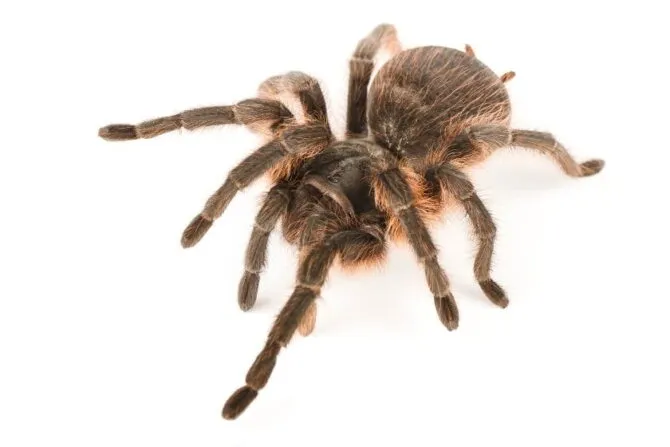
Several factors can influence a tarantula’s feeding habits, including temperature and humidity. These environmental conditions affect the tarantula’s metabolism and activity level. A tarantula may eat less during cooler temperatures, as its metabolism slows down. Likewise, high humidity can make them feel less hungry, as they may be getting enough moisture from their environment. The species of tarantula and its specific needs also play a role. Some species are naturally more voracious eaters than others. It’s crucial to consider all these factors when determining the appropriate feeding schedule. This will help you provide your tarantula with the right amount of food and keep it healthy and active.
Temperature’s Impact
Temperature plays a critical role in tarantula feeding. As cold-blooded creatures, tarantulas’ metabolisms are directly affected by their environment’s temperature. In warmer conditions, their metabolism speeds up, increasing their need for food and causing them to eat more frequently. Conversely, in colder temperatures, their metabolism slows down, and they will eat less or even stop eating altogether. During colder months, it’s common for tarantulas to eat less and become less active. It’s vital to maintain the correct temperature range for your tarantula’s species to ensure it has a healthy appetite and can properly digest its food. Providing a heat source, such as a heat mat or ceramic heat emitter, can help maintain the appropriate temperature, especially during cooler months.
Humidity’s Influence
Humidity also affects a tarantula’s feeding habits and overall health. Tarantulas absorb moisture through their environment. High humidity can sometimes reduce their appetite, as they may be getting enough moisture through the air. It’s important to maintain the correct humidity levels for your tarantula’s species. Too much humidity can lead to mold growth and other health problems. Too little can cause the tarantula to become dehydrated, which can affect its molting process. Providing a water dish and misting the enclosure regularly are essential for maintaining the appropriate humidity levels. Monitoring the humidity and adjusting it as needed is a key part of proper tarantula care. Maintaining the right balance is crucial for a healthy and thriving tarantula.
Fact 5 Signs Your Tarantula Needs Food
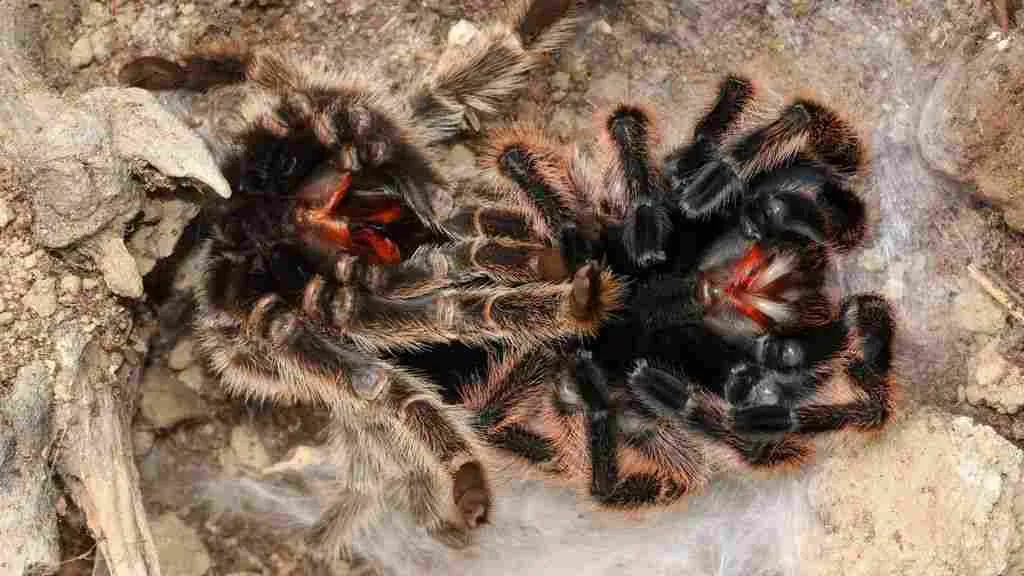
While tarantulas can survive for long periods without food, it’s important to recognize the signs that your tarantula may be hungry. One common indicator is an active hunting behavior. A tarantula that is actively searching for prey, moving around its enclosure frequently, or displaying a predatory stance is often a sign that it’s ready to eat. Another sign is a large, empty abdomen. A tarantula’s abdomen will appear fuller after a meal, and if it appears shrunken or deflated, it might be hungry. However, it’s crucial to remember that tarantulas also eat less frequently when they are about to molt. If a tarantula is refusing food and appears sluggish, it may be preparing to molt. Always observe your tarantula’s behavior before offering food, and adjust the feeding schedule as needed.
How to Feed Your Tarantula
Feeding a tarantula involves more than simply tossing an insect into its enclosure. There are several factors to consider to ensure the process is safe and effective. It’s essential to provide the right prey, offer it at the appropriate frequency, and ensure the tarantula has access to fresh water. Proper feeding practices can also reduce the risk of injury to the tarantula. Understanding these practices will allow you to feed your tarantula safely and ensure its well-being. Paying attention to the details makes a difference.
Choosing the Right Prey
The choice of prey is crucial. Crickets, mealworms, and dubia roaches are common and readily available. However, it’s essential to choose prey that is the appropriate size for the tarantula. As a general rule, the prey should be no larger than the tarantula’s body length. Offering prey that is too large can stress the tarantula and potentially cause injury. It’s also important to consider the nutritional value of the prey. Gut-loading insects before feeding them to the tarantula can increase their nutritional content. Gut-loading involves feeding the insects a nutritious diet, which in turn, provides the tarantula with essential vitamins and minerals. Always offer healthy prey to ensure the tarantula is getting the best possible nutrition.
Feeding Frequency Guidelines
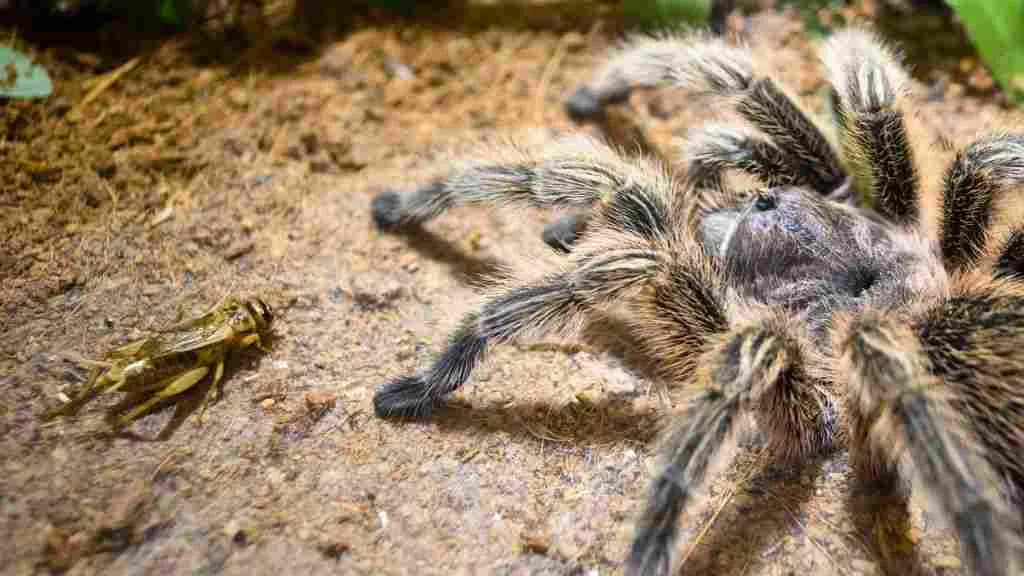
The frequency of feeding should be adjusted based on the tarantula’s age and size. Spiderlings may need to be fed two to three times a week, while juveniles can be fed once a week. Adult tarantulas may only need to be fed once every few weeks or even once a month. Observe the tarantula’s body condition and adjust the feeding schedule accordingly. If the tarantula’s abdomen appears too large, it may be a sign that it is being overfed. Avoid overfeeding, as it can lead to health problems. Providing regular feeding is necessary for a tarantula’s health.
Providing Water
In addition to food, tarantulas require access to fresh, clean water. This can be provided through a shallow water dish or by misting the enclosure regularly. Ensure the water dish is small enough that the tarantula cannot drown in it. Change the water regularly to prevent the growth of bacteria. Misting the enclosure helps maintain the appropriate humidity levels and provides the tarantula with an additional source of hydration. Always have fresh water available and available in the enclosure. Providing water is a critical aspect of tarantula care.
Conclusion
Understanding a tarantula’s diet is crucial for providing proper care and ensuring its health and longevity. From knowing what they eat to understanding their ability to fast and adjusting feeding frequency based on their age and species, every aspect of their diet plays a vital role in their well-being. Following the guidelines provided ensures that your tarantula thrives in captivity. By providing the right food, proper care, and a suitable environment, you can enjoy the company of these fascinating creatures for many years. Always prioritize the health and safety of your tarantula by providing the food, water and care it needs.
